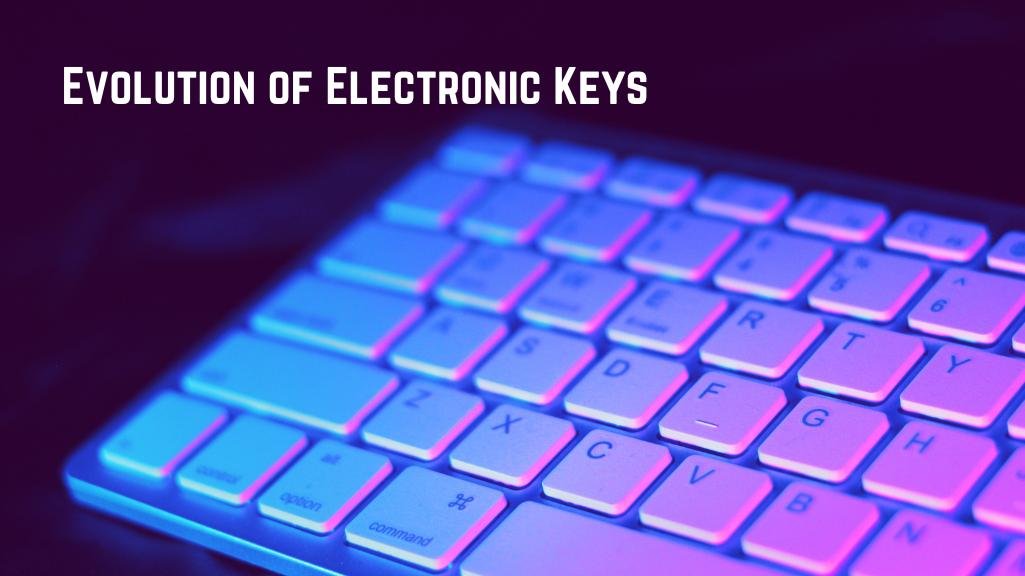The Evolution of Electronic Keys: From Traditional to Smart Access Solutions
Aaron Alston
. 2 min read
In the past few decades, technological advancements have revolutionized various industries, and the field of access control is no exception. Electronic keys have emerged as a secure and convenient alternative to traditional physical keys, enabling seamless access management. Alongside this, the integration of online chat support has further enhanced user convenience and support for individuals seeking assistance with their electronic key systems. This article delves into the evolution of electronic keys, exploring their types, benefits, and potential applications in various sectors, while also highlighting the value of online chat in addressing user queries and ensuring a smooth experience with these cutting-edge solutions.

Types of Electronic Keys
RFID (Radio-Frequency Identification) Keys: RFID keys use radio frequency technology to transmit data between a key fob or card and an RFID reader. They come in two main categories: low-frequency (LF) and high-frequency (HF) RFID keys. LF RFID keys are commonly used in applications like proximity cards for building access, while HF RFID keys find extensive use in contactless payment systems and identification cards.
Bluetooth-Enabled Keys: Bluetooth keys leverage Bluetooth technology to connect with smartphones or other devices. Users can unlock doors or vehicles by simply approaching the lock, eliminating the need for physical interaction with the key.
Biometric Keys: Biometric keys rely on unique biological characteristics, such as fingerprints, iris patterns, or facial recognition, to grant access. These keys offer an unparalleled level of security since biometric data is nearly impossible to replicate.
Keypad Entry Keys: Keypad entry keys use a combination of alphanumeric codes entered on a keypad to grant access. These keys are commonly seen in electronic safes, secure rooms, and some residential security systems.
Benefits of Electronic Keys
Enhanced Security: Electronic keys offer a higher level of security compared to traditional keys. The implementation of encryption, secure data transmission, and biometric authentication significantly reduces the risk of unauthorized access.
Convenience and Flexibility: Users no longer need to carry a multitude of physical keys for different doors or areas. Electronic keys can be programmed to provide access to multiple locations or services, making them highly versatile.
Audit Trails: Many electronic key systems offer audit trail features, recording access events and user activities. This tracking capability proves invaluable for security and monitoring purposes, aiding in investigations if any security breaches occur.
Remote Management: With some electronic key solutions, administrators can remotely manage access permissions. This is especially beneficial in scenarios where immediate changes are necessary, such as revoking access for lost keys or updating access rights for specific individuals.
Applications of Electronic Keys
Commercial Buildings: Electronic keys find extensive use in corporate offices, hotels, hospitals, and other commercial settings, providing controlled access to different departments or restricted areas.
Automotive Industry: Modern vehicles increasingly feature smart key systems, allowing drivers to unlock and start their cars without physically inserting a key. Some advanced systems also enable remote operation through smartphone apps.
Home Security: Homeowners are adopting electronic key systems for increased residential security. Smart locks allow homeowners to grant temporary access to guests, service providers, or delivery personnel, enhancing convenience and safety.
Government and Institutions: Government buildings, military installations, and educational institutions utilize electronic keys to manage access to sensitive areas and resources.
Conclusion
The evolution of electronic keys has revolutionized access control, offering enhanced security, convenience, and remote management capabilities. As technology continues to advance, we can expect further innovation in this field, with increased integration of Internet of Things (IoT) and artificial intelligence, paving the way for even more sophisticated and secure electronic key systems. However, despite these advancements, it remains crucial to continually improve encryption and security protocols to stay ahead of potential threats and ensure the safety of people and assets relying on electronic key access solutions.
.jpg)
.jpg)